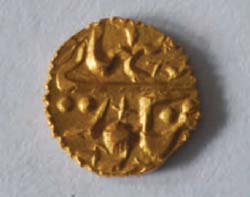Empire of the Sikhs (48 page)
Read Empire of the Sikhs Online
Authors: Patwant Singh

Three Sikh Akalis, drawn by Emily Eden
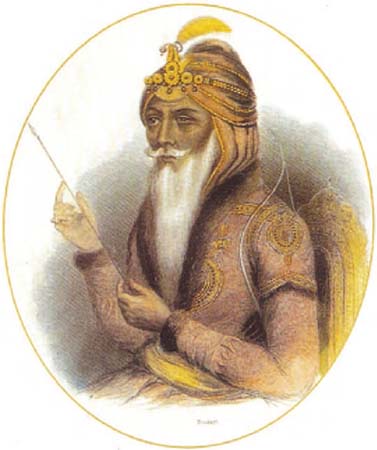
Engraving of Maharaja Ranjit Singh by George J. Stodart after a drawing by an unknown Indian artist, 1860
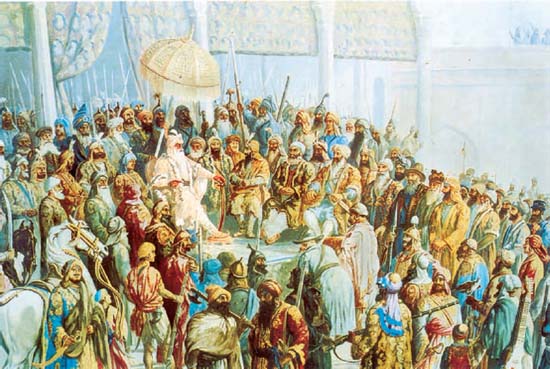
Maharaja Ranjit Singh in Durbar; oil painting in the Central Sikh Museum, Darbar Sahib, Amritsar
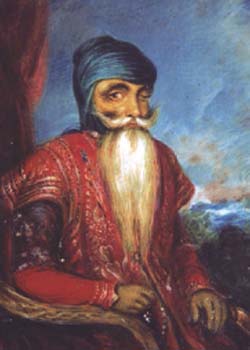
Posthumous oil portrait of Maharaja Ranjit Singh, c. 1850
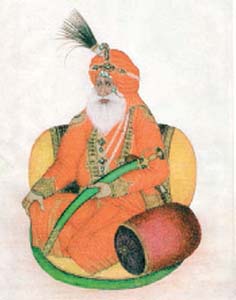
An important Sikh chieftain, Sham Singh Attariwala; watercolour
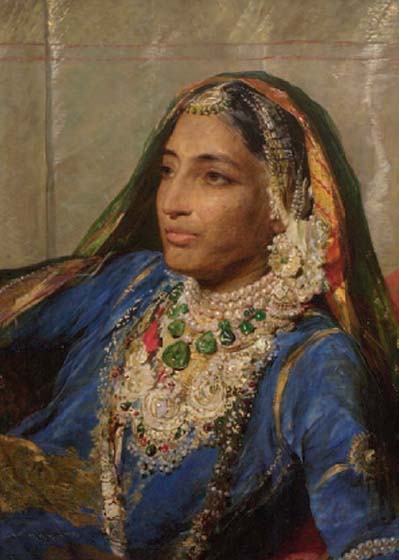
Rani Jindan, mother of Maharaja Dalip Singh and a powerful woman in the Punjab in the final years of the Sikh state; oil painting by George Richmond, 1863 (detail)
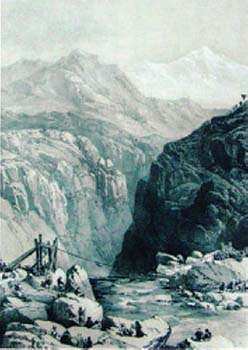
Bridging the River Chenab;
oil painting by Charles Hardinge
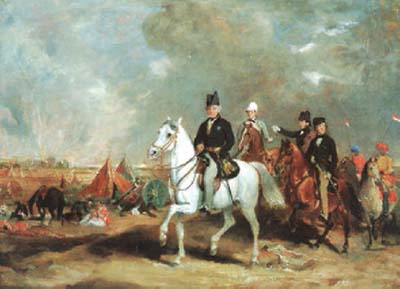
Governor-General Viscount Hardinge, His Two Sons and Colonel Wood on the Battlefield of Ferozeshahr;
oil painting by Sir Francis Grant
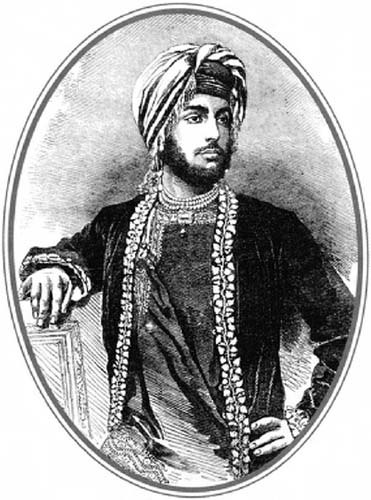
Maharaja Dalip Singh, last in the line of Maharaja Ranjit Singh. As the British hold tightened on the Punjab, he was banished from his homeland and exiled to Europe in 1854. Engraving from the
Illustrated London News
after a photograph by O.G. Rajlander
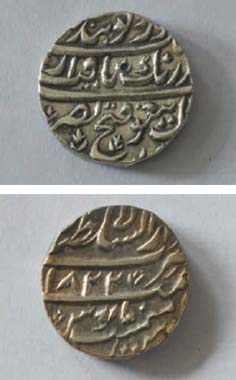
The first coin the
misls
minted at Lahore was a silver rupee bearing the Gobindshahi couplet in Persian; on the reverse (second from top) the coin carries the date VS 1822 (AD 1765.)
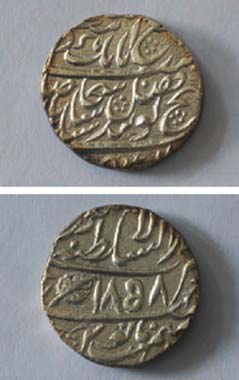
Second from bottom: Silver rupee struck in Lahore in 1801, the year Ranjit Singh was proclaimed ruler of Punjab; the coin carries the Nanakshahi couplet, with the date VS 1858 on the reverse (bottom).
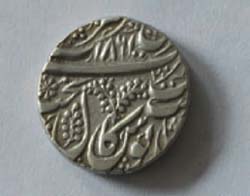
A Morashahi rupee, minted at Amritsar, is adorned with branches and berries, symbolizing Ranjit Singh's passion for Moran, his Kashmiri love.
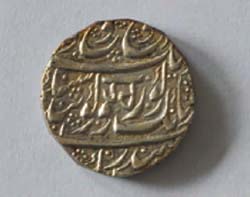
General Hari Singh Nalwa, governor of Kashmir, minted this coin in 1822. The letters
Har
on it in Gurmukhi are the first letters of Nalwa's name but also stand for the Almighty, underlining Nalwa's firm faith.
